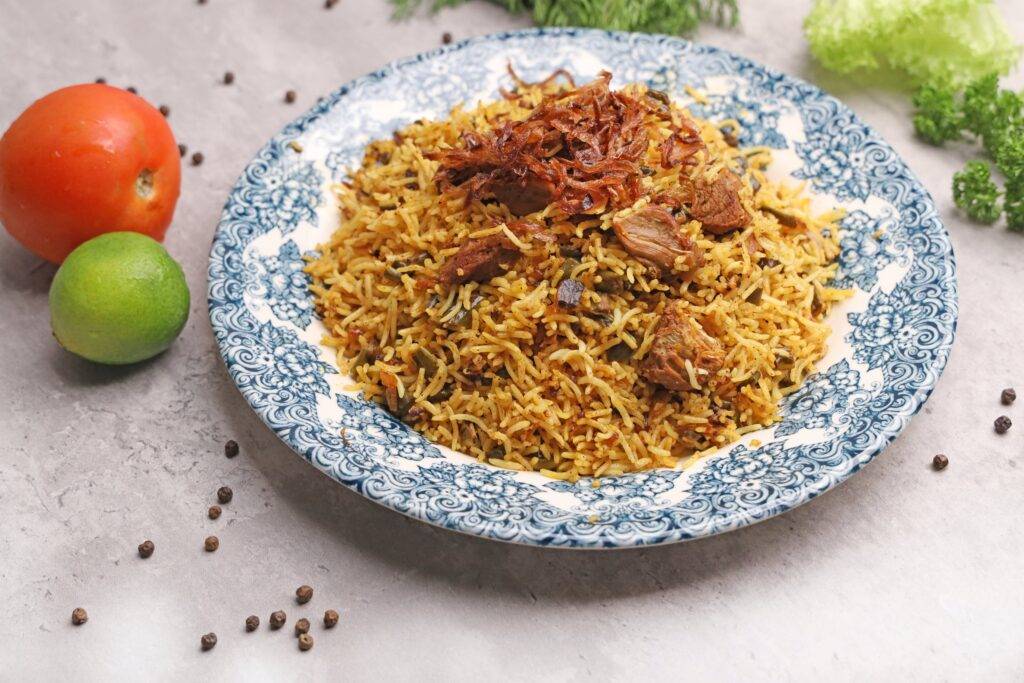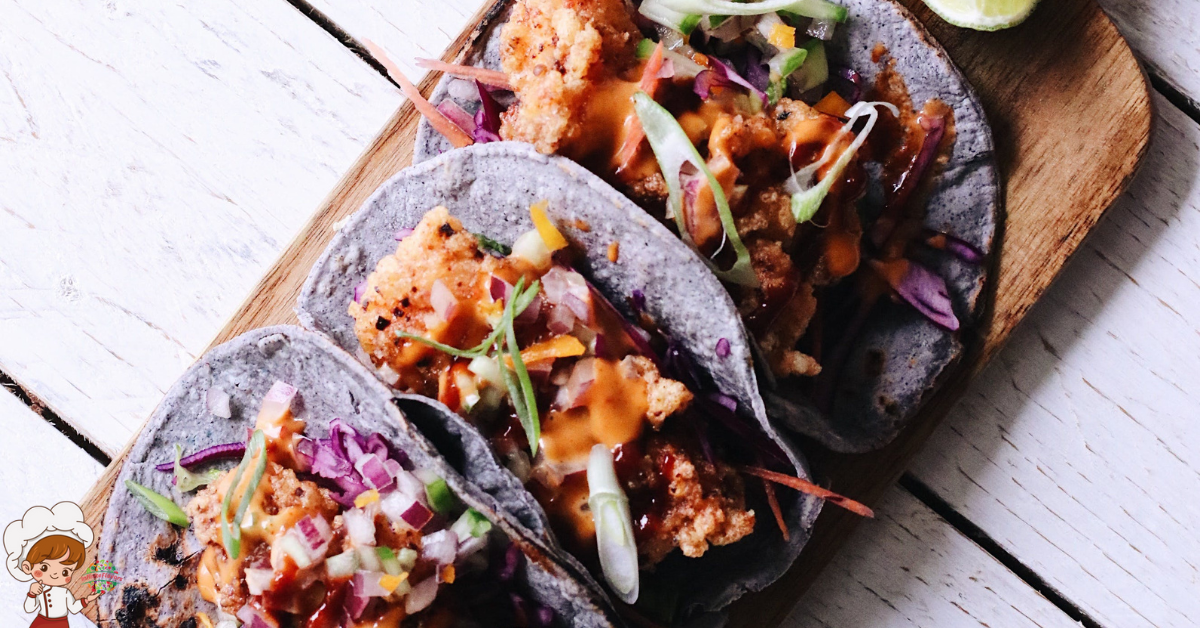The Best Spicy Biryani: A Culinary Journey Through India

Spicy Biryani, a dish that tantalizes the taste buds with its rich aroma and flavorful layers, has a history as diverse and colorful as the nation it hails from – India. Its origins can be traced back to the royal kitchens of the Mughal Empire, where it was created as a lavish feast fit for kings. However, its journey from the royal courts to the streets and homes of India is a testament to its enduring popularity and adaptability.
Origins in Mughal Cuisine:
The origins of biryani trace back to the kitchens of the Mughal emperors, who ruled over the Indian subcontinent from the early 16th to the mid-19th century. The Mughals, who were of Central Asian descent and known for their sophisticated palate and love for lavish feasts, played a significant role in shaping India’s culinary landscape.
During their reign, the Mughal emperors brought with them a rich culinary tradition that fused Persian, Central Asian, and Indian influences. They introduced new cooking techniques, ingredients, and flavors to the Indian subcontinent, leaving an indelible mark on the region’s cuisine.
Biryani, with its fragrant aroma and rich flavors, emerged as one of the crown jewels of Mughal cuisine. It was originally conceived as a luxurious dish fit for royalty and was often served during grand banquets and celebrations in the imperial courts.
The Mughal chefs, known as bawarchis, perfected the art of biryani-making, combining long-grain Basmati rice with tender cuts of meat, aromatic spices, and fragrant herbs. The dish was cooked using the dum pukht method, where the ingredients were sealed in a pot with dough and slow-cooked over a low flame, allowing the flavors to meld together and create a dish of unparalleled richness and depth.
Biryani quickly gained popularity among the Mughal nobility and aristocracy, who savored its exquisite taste and opulent presentation. It became synonymous with wealth, power, and hospitality, symbolizing the grandeur of the Mughal Empire.
Over time, biryani transcended the confines of the royal courts and spread to different parts of India, where it underwent further refinement and adaptation. While its origins may lie in Mughal cuisine, biryani’s journey is a testament to the cultural exchange and culinary innovation that have shaped India’s diverse and vibrant food culture.
Regional Variations:
As biryani spread across the Indian subcontinent, it underwent various regional adaptations, each adding its own unique twist to the classic dish. In Hyderabad, the capital of the southern state of Telangana, the Hyderabadi biryani emerged, known for its bold flavors and use of local ingredients such as saffron and dried fruits. Meanwhile, in Lucknow, the biryani took on a more delicate and aromatic profile, with an emphasis on fragrant spices and slow-cooked meat.
Cultural Significance:
Biryani holds a revered place in Indian culture, serving not only as a dish but also as a symbol of celebration, hospitality, and community. Its cultural significance extends beyond its delectable taste, encompassing various aspects of Indian society and traditions.
- Celebrations and Festivals: Biryani is often synonymous with joyous occasions such as weddings, festivals, and family gatherings. It is a centerpiece of feasts during Eid, Diwali, weddings, and other special events, where it brings people together to share in the festivities and create cherished memories.
- Regional Diversity: Across India, biryani takes on diverse regional variations, reflecting the unique culinary traditions and ingredients of different states and communities. From the fragrant Hyderabadi biryani of the south to the rich and spicy Kolkata biryani of the east, each region adds its own twist to this beloved dish, showcasing the country’s culinary diversity.
- Hospitality and Generosity: Offering biryani to guests is a gesture of warmth and hospitality deeply ingrained in Indian culture. It symbolizes generosity and abundance, as hosts go to great lengths to prepare and serve this elaborate dish to their guests, ensuring they feel welcome and valued.
- Culinary Heritage: Biryani serves as a tangible link to India’s rich culinary heritage and historical legacy. Its roots in Mughal cuisine highlight the influence of India’s royal past, while its evolution over the centuries reflects the country’s cultural exchanges and culinary innovations.
- Community Bonding: The preparation and sharing of biryani often involve a sense of communal bonding and collaboration. Families, friends, and communities come together to cook, serve, and enjoy this dish, fostering connections and strengthening social ties.
- Symbol of Unity: Biryani transcends barriers of religion, caste, and ethnicity, bringing people from diverse backgrounds together around the dining table. It serves as a symbol of unity and harmony, fostering a sense of belonging and shared identity among Indians across the country.
In essence, biryani embodies the spirit of India—a land of diverse cultures, traditions, and flavors—uniting people through the universal language of food and enriching the tapestry of Indian culinary heritage.

Classic Indian Biryani
Ingredients
- Ingredients:
- 2 cups basmati rice
- 500 g chicken mutton, or vegetables (cut into pieces)
- 1 cup yogurt
- 2 onions sliced
- 2 tomatoes chopped
- 4-5 green chilies slit
- 1/4 cup chopped mint leaves
- 1/4 cup chopped coriander leaves
- 2 tablespoons ginger-garlic paste
- 1 tablespoon biryani masala
- 1/2 teaspoon turmeric powder
- 1/2 teaspoon red chili powder
- 1/2 teaspoon garam masala powder
- 1/4 cup fried onions for garnish
- 1/4 cup ghee or oil
- Saffron strands soaked in warm milk for color and aroma
- Salt to taste
- For Marinade:
- 1/2 cup yogurt
- 1 tablespoon ginger-garlic paste
- 1 teaspoon red chili powder
- 1/2 teaspoon turmeric powder
- Salt to taste
- For Layering:
- Fried onions
- Chopped mint leaves
- Chopped coriander leaves
- Saffron-infused milk
- Ghee or oil
Instructions
- Instructions:
- Prepare the Marinade:
- In a bowl, mix yogurt, ginger-garlic paste, red chili powder, turmeric powder, and salt.
- Marinate the chicken, mutton, or vegetables in this mixture for at least 1 hour.
- Cook the Rice:
- Wash basmati rice thoroughly and soak it in water for 30 minutes.
- In a large pot, bring water to a boil.
- Add salt and rice to the boiling water and cook until the rice is 70% done.
- Drain the rice and set aside.
- Prepare the Biryani Masala:
- Heat ghee or oil in a pan.
- Add sliced onions and sauté until golden brown.
- Add ginger-garlic paste and cook until the raw smell disappears.
- Add chopped tomatoes, green chilies, and biryani masala. Cook until the tomatoes turn mushy.
- Add marinated chicken, mutton, or vegetables to the masala and cook until they are partially cooked.
- Layering the Biryani:
- Grease a heavy-bottomed pot with ghee or oil.
- Spread a layer of partially cooked rice at the bottom of the pot.
- Add a layer of cooked chicken, mutton, or vegetables on top of the rice.
- Sprinkle chopped mint leaves, coriander leaves, and fried onions over the meat.
- Repeat the layers until all the rice and meat are used up, ending with a layer of rice.
- Drizzle saffron-infused milk and ghee over the top layer.
- Dum Cooking (Slow Cooking):
- Cover the pot with a tight-fitting lid or seal it with aluminum foil.
- Cook on low heat (dum) for 20-25 minutes or until the rice is fully cooked and aromatic.
- Once done, let it rest for a few minutes before serving.
- Serve:
- Gently fluff the biryani with a fork to mix the layers.
- Serve hot with raita (yogurt dip), salad, and pickle.
Modern Influence:
In recent years, biryani has transcended borders to become a global culinary sensation. It can be found on menus in restaurants around the world, loved for its bold flavors and comforting appeal. From street food stalls to fine dining establishments, biryani continues to evolve and adapt, incorporating new ingredients and techniques while staying true to its rich culinary heritage.
Conclusion: Spicy Biryani
In essence, biryani is more than just a dish – it is a reflection of India’s rich cultural tapestry, blending flavors, traditions, and influences from across the centuries. Its journey from the royal courts to the dining tables of everyday Indians is a testament to its enduring popularity and universal appeal. Whether enjoyed in a bustling street market or savored at a lavish banquet, biryani remains a symbol of India’s vibrant culinary heritage.








